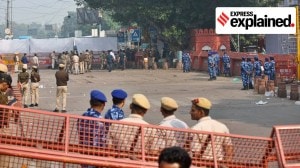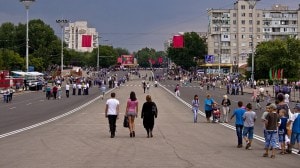Match budget statistics with strategy
Last year in this column we had complimented the finance minister for the agriculture initiatives which were announced and not implemente...

Last year in this column we had complimented the finance minister for the agriculture initiatives which were announced and not implemented, so caution is needed. He did not spend Rs 1,600 crore on the advanced irrigation benefit programme, but kept it at levels I had started it with. Also he announced my favourite programme for water management in the eastern region but did nothing for it. Fortunately, this year apart from the hype he is not promising in fine print to spend more, but is coming out with an interesting approach on reform which we will start with, in the hope something will come out of it. The worry is that he is not spending his own rupees at all, so we may again end up with croppers.
But first the new approaches. Frankly I like the mindset the current boys in the finance ministry have worked with. When in difficulty don’t just go by what “they” tell you but work out your own strategy. It is obvious that while everything possible should be done for exports, in the next year the rest of theworld is not going to be a great source of growth. Three out of four Asian executives quizzed recently saw 1999 as another tough year. The Government of India doesn’t have money or the courage to raise it, so the best way is to encourage private and community effort in priority areas, at home. This is “reform”.
So the budget says, if you will take water to the field we will help you. If you invest in transmission of electricity, the SEB gets a tax break. There are sops for capacity building in cold storages and processing. The housing sector gets a break which would help steel and cement, but could also if intelligently used trigger a process of widespread growth. In a hundred districts artisan-based industrialisation based on modern technology and linked with regi-onal, national and glo-bal markets could be aimed at. These ideas are like little brothers to me, as also the thought that the basic minimum services programme could be linked to panchayats as originally designed. In this column we havepassionately argued for all this and the design has been worked out elsewhere, and it is good to know that there are like-minded people.
But the catch lies elsewhere. All of this needs the state to support it. Without a policy system backup, these incentives will not by themselves have the intended effect and the political inability to raise resources becomes the major bottleneck to giving these ideas the push they need. We have not worked out the detail to substitute the state by community or private efforts at the lower level in an integrated manner and, in many cases, there is still a major role for the state to play; it is here that our fiscal crisis becomes a real problem.
If there is no money to spend on distribution or transmission of po-wer, the tax break does not work. We will some day implement the Co-elho Committee report I had accepted, but until then? The agro climatic plan we had developed sees clearly the role of pricing and water users groups and it is very comforting to know that there ismoney to help those who will help themselves. But as the national water management project sho-wed in a number of experimental projects, the system has to be cleared from the “branch” systems downwards and irrigation departments are broke.
Recent success stories in watersheds show how some lender of last resort was always necessary to cover the last mile and our normal Nabard and departmental programmes don’t have the necessary flexibility. The panchayat system has to be geared up but very few states have even set up the district planning agencies as required under constitutional amendme-nts. The state finance commissions have yet to be operational although the budget’s signal to encourage productive borrowing by municipal bodies is a very powerful stimulus in the right direction.
The strategy the budget tries to operationalise has therefore to be a part of a larger policy framework or plan, and that’s where the nature of the country’s policies has become a bottleneck in a way not yet recognised. Therevenue deficit of the Government of India is now increasing at around Rs 14,000 crore every year. Towards the end of the last decade this was the total revenue deficit. The leadership has lost the ability to say no to any unreasonable demand.
This is the first budget in which the pretence of increasing the Plan has been given up. It is not accidental that the only major items on which expenditure was more than the budget this year was police and home affairs, which went up from the budgeted figure of Rs 668 crore to the revised estimate of Rs 762 crore, and the unplanned and pork barrel MP local area development scheme, going up from Rs 790 crore to Rs 1,583 crore next year. This is a country in which the expenditure on most merit goods was ruthlessly cut this year. For example, the revised estimate for higher education is Rs 1,602 crore, as compared to the budget of Rs 2,235 crore. Similar figures for small industry and agro-based rural industries were Rs 1,016 crore and Rs 966 crore; and non-conventionalenergy Rs 408 crore and Rs 308 crore.
This year’s budget is a watershed. Given the constraints, it has developed a strategy. But its politics is that of appeasement and it is clear that the state has no maneuverability left in its leadership role. This mires the strategy and one can now only hope against hope.





- 01
- 02
- 03
- 04
- 05


























